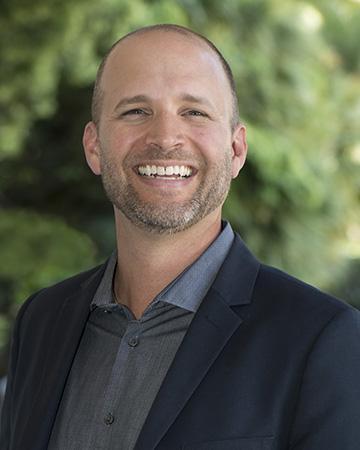The Biden administration is sending California $1.2 billion to rapidly scale up hydrogen production and drop the price to compete with diesel.
While ports and transportation are the priority, agriculture is also tough to electrify and stands to benefit from hydrogen. State officials are pushing farmers to get involved and outline their needs as the state races toward its 2045 carbon neutrality goal.
“Is there an area that we should target first for hydrogen and fuel cells within the operations of agricultural systems?” Tyson Eckerle, senior advisor for clean infrastructure and mobility at the Governor’s Office of Business and Economic Development (GO-Biz), asked in a presentation to the State Board of Food and Agriculture last week.
Eckerle urged food producers to submit those ideas to the Alliance for Renewable Clean Hydrogen Energy Systems, known as ARCHES.
The public-private partnership is working with GO-Biz as well as the hydrogen industry, academics, labor interests and community organizations to deploy hydrogen as quickly as possible to meet the federal government’s accelerated timeline.
The funding from the Department of Energy has unlocked an additional $11.7 billion in matching funding in the form of state, private and municipal bonds along with cash on hand at companies, according to ARCHES CEO Angelina Galiteva.
DOE wants the projects to be in the ground by 2030 and operational for two years before all of the funding is awarded. By that date, the amount of hydrogen consumed in the state is expected to leap from about 7,000 metric tons today to 190,000. It will need to produce 17 million metric tons of hydrogen per year, deploying it in agriculture and other sectors, to be carbon free by 2045. That led the Air Resources Board’s Climate Scoping Plan to call for scaling up the volume of hydrogen production by 1,700 times.
 Tyson Eckerle, GO-Biz
Tyson Eckerle, GO-BizThe most promising market right now and the one that can get “the biggest bang for the buck” is heavy-duty transportation, including trucking and public transit. California’s ports, meanwhile, love hydrogen fuel cells for the ability to carry heavy loads without sacrificing space and for the flexibility to operate during power outages and to power battery electric equipment, said Galiteva.
ARCHES seeks to establish a hydrogen “ecosystem” throughout the state, with much of the production in the Central Valley and most of the consumption in Southern and Northern California.
“We don't have specific agricultural projects in the federally funded part of the ARCHES hub,” said Eckerle. “But it will play a huge role going forward in our state's hydrogen economy.”
Agriculture could take a lesson from ports, which are also struggling to replace specialized heavy-duty equipment that has no off-the-shelf hydrogen alternative. Galiteva said they are instead looking to directly swap out diesel engines in that equipment with fuel cells, a more cost-efficient approach that extends the life of the equipment. That would help further the state’s climate goals, since selling the equipment to purchase a hydrogen model would shift the diesel pollution to another part of the country.
It’s easy to be “in the know” about what’s happening in Washington, D.C. Sign up for a FREE month of Agri-Pulse news! Simply click here.
“This might be a good thing for the state to do—to look at what is the heavy-duty equipment that could be utilized and how we can accelerate the timelines and have economies of scale,” said Galiteva.
The cost of switching to hydrogen, however, still raises concerns for CDFA Secretary Karen Ross.
“I just want to add a dash of reality here about the size of farming,” said Ross. “There are large-scale farms, but the vast majority of farms are not.”
Ross said most farms are less than 500 acres, and those farmers operate on thin profit margins yet face the same climate mandates. Eckerle acknowledged that the priority is to get the hydrogen market off the ground and to lower the price before the hydrogen hub can begin to consider specific industry needs.
“We don't want to sit here and pretend like it's all sunshine and rainbows,” he said. “We want to be realistic about what we can do.”
Galiteva added that the market signal California sends is “extremely important” and that equipment manufacturers will respond if the state can build out the hydrogen ecosystem.
“Economies of scale—especially from California—do send a loud and clear message,” she said.
On the production side, agriculture is a largely untapped source. Eckerle noted that one program at ARCHES setting up a system to harvest hydrogen from woody biomass like forest debris would be able to handle agricultural waste as well.
Producing “green fertilizer” is another opportunity in California. Hydrogen sourced from fossil fuels generates the ammonia used in fertilizers today. But mass producing green hydrogen for ammonia would decarbonize the process. Galiteva said a delegation from Germany has already approached her about the prospect of importing a significant amount of ammonia from California.
Environmental interests have strongly opposed the use of biogas from dairy digesters to produce hydrogen, arguing that green hydrogen should exclude such carbon-based sources and come solely from renewable wind and solar power. Eckerle countered that ARCHES considers green hydrogen to include both biogenic sources and electrolysis from renewables.
He noted that avoiding the emissions that would come from the biomass has the potential to drop the carbon intensity of hydrogen to below zero.
The basic goal of ARCHES, he explained, is to produce carbon-negative hydrogen at the cost of diesel by 2030.
For more news, go to www.Agri-Pulse.com.


